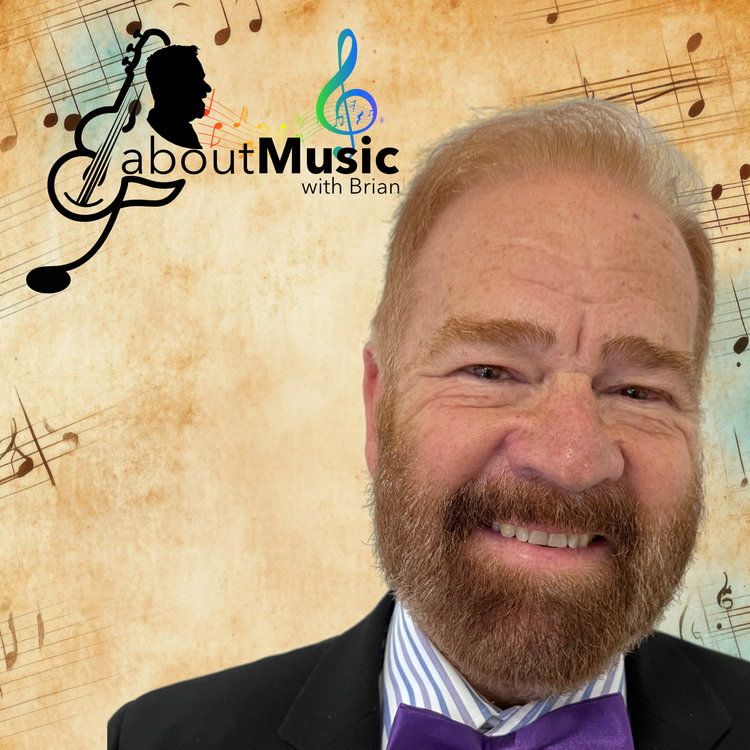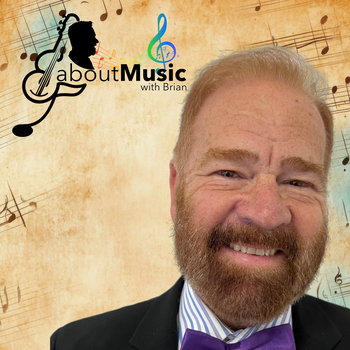
Programme 116 – Cor Anglais: Classical Roots and Romantic Voices
Loading player...
Welcome to today’s edition of “about Music” with Brian.
Last week we listened to the Oboe, a double reed instrument with a bright treble penetrating sound. It is the familiar voice of the family. There are two more family members.
The oboe d’amore, pitched lower in A, has a warmer, more intimate, pastoral sound — favoured by Baroque composers like Bach.
The cor anglaise or English Horn, pitched in F, is larger and darker, with a rich, melancholy tone often compared to an alto voice.
Together, they offer composers a remarkable range of expressive possibilities.
Today we will listen to the Cor Anglais, which is also known as the “English Horn”. I have five works for your enjoyment.
This programme moves beautifully from Classical grace (Bedetti, Donizetti) through Romantic lyricism (Sibelius) to expressive modernity (Stacy) and pastoral English orchestral writing (Vaughan Williams).
Composer (Surname, Forenames) Title Descriptor
Bedetti, Giuseppe Concerto for English Horn (F major) Classical elegance with clear lines and graceful phrasing — a stylish opening from this rarely heard 18th-century work.
Donizetti, Gaetano Concerto for Cor Anglais in G minor Tuneful bel canto writing and a warm Classical-Romantic blend make this concerto an ideal companion to Bedetti.
Sibelius, Jean The Swan of Tuonela, Op. 22 No. 3 The quintessential cor anglais solo — haunting, atmospheric, and deeply evocative.
Rochberg, George (Thomas Stacy) Perpetual Motion (from the Concerto for English Horn) A single movement excerpt showcasing the instrument’s agility and modern brilliance, while remaining accessible.
Vaughan Williams, Ralph A London Symphony, II. Lento A long, elegiac cor anglais solo at the heart of this movement crowns the programme with lyrical depth and English melancholy.
Last week we listened to the Oboe, a double reed instrument with a bright treble penetrating sound. It is the familiar voice of the family. There are two more family members.
The oboe d’amore, pitched lower in A, has a warmer, more intimate, pastoral sound — favoured by Baroque composers like Bach.
The cor anglaise or English Horn, pitched in F, is larger and darker, with a rich, melancholy tone often compared to an alto voice.
Together, they offer composers a remarkable range of expressive possibilities.
Today we will listen to the Cor Anglais, which is also known as the “English Horn”. I have five works for your enjoyment.
This programme moves beautifully from Classical grace (Bedetti, Donizetti) through Romantic lyricism (Sibelius) to expressive modernity (Stacy) and pastoral English orchestral writing (Vaughan Williams).
Composer (Surname, Forenames) Title Descriptor
Bedetti, Giuseppe Concerto for English Horn (F major) Classical elegance with clear lines and graceful phrasing — a stylish opening from this rarely heard 18th-century work.
Donizetti, Gaetano Concerto for Cor Anglais in G minor Tuneful bel canto writing and a warm Classical-Romantic blend make this concerto an ideal companion to Bedetti.
Sibelius, Jean The Swan of Tuonela, Op. 22 No. 3 The quintessential cor anglais solo — haunting, atmospheric, and deeply evocative.
Rochberg, George (Thomas Stacy) Perpetual Motion (from the Concerto for English Horn) A single movement excerpt showcasing the instrument’s agility and modern brilliance, while remaining accessible.
Vaughan Williams, Ralph A London Symphony, II. Lento A long, elegiac cor anglais solo at the heart of this movement crowns the programme with lyrical depth and English melancholy.

